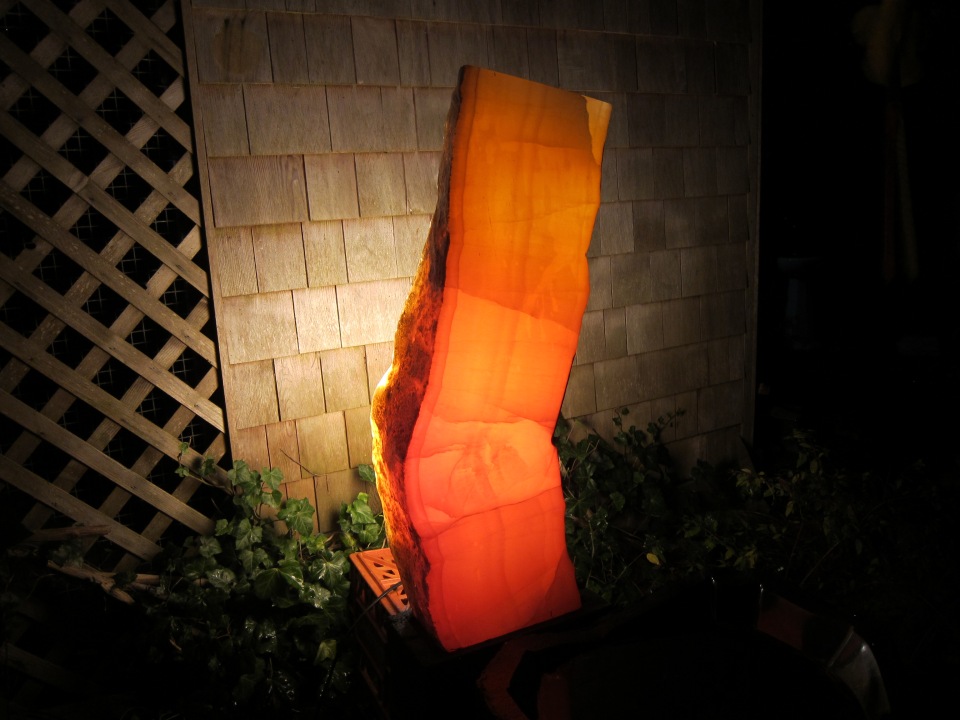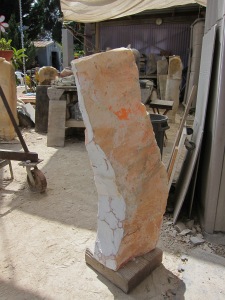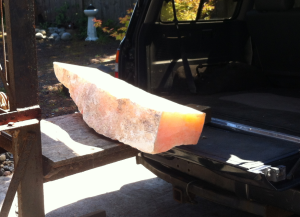Author: Bill Brayman
Stone Sculpture
Rodin Sculpture Exhibit
June 2013 I went to the Maryhill Museum out in the middle of nowhere in the Columbia River Gorge to visit the excellent Rodin sculpture exhibit. (Note: to help with poor image quality, there is an option to view images full size at the bottom of the image page)





















Deer seen while walking
Pics taken with a phone while walking in the neighborhood
Surf seen from Neahkahnie Mt.
Some fine rhythmic chill-out music
Here’s a playlist of songs on Youtube with a really good rhythmic feel, good for road trips or just chilling out anywhere. Listed below with link to youtube.
Click below to start with most recently added song:
Click here to see the list of songs on youtube in a new window
Rythmic Chill-out playlist – sorted by date added: Continue reading Some fine rhythmic chill-out music
Visualizing song and choreography structure
Visualizing song and choreography structure. This song and this choreography are nicely structured to illustrate a point. I’m experimenting with the idea of combining two views of a performance – a dance video side by side with a musicians view of song structure. I’m using Garage Band, an app for analyzing and composing music, to show a running view of the song’s beats and measures and their grouping as song sections. So this video is a screen capture showing both musical and dance views running simultaneously. Continue reading Visualizing song and choreography structure
Machine learned and generated choreography
Here is an interesting application of deep learning to produce generated dance moves, trained on raw motion capture data from a human dancer. After learning the patterns of dance moves, the software uses the learned patterns to generate novel choreographic material, sequences of anatomically feasible movements with elements of the dance style observed during training. The dance sequence seems to show some higher level compositional cohesion, more than just a random sequence of moves. This is just a prototype, but you can see the obvious potential this has for composing and communicating choreography.
More information: http://peltarion.com/creative-ai
How dancing improves health
TEDxObserver – Peter Lovatt – Psychologist and dancer – How dancing improves health.
Stay with it, get ready to participate, you won’t be disappointed.
Henna carving progress – june 2014
The top is roughed out to form the tri-cyclic form, and now the middle section is getting roughed out. The challenge is to blend the concave (hollow) curves of middle section into the convex (bulging) curves of the top and bottom, like the the top and bottom of the letter S smoothly blends the two curves. But it turns out that the red side will form a cusp, a sharp edge transition to the middle. I’m using the round shape of the saw and grinding wheel to achieve a smooth even radius to start with and then as it gets exaggerated, the radius will vary and the curves will become a bit more organic. Still much more to go…
Ventura Art and Music Scene
Henna stone carving progress
Just a note on my progress carving the henna stone into a wavy form. In an earlier note I was musing about the significance of the inflection line and how it influences the shape. Today gave me another perspective with regard to how to actually carve the form efficiently. Essentially the challenge of this particular form is to carve cone shapes. There are four characteristics to capture. The tapering shape, linear in one direction through the center to the opposite side, and rounded waves in the other direction, joined smoothly at the inflection line.
Tricycle design for the Henna stone – and curious properties of the inflection line
The inflection point is where the path of a curved line changes direction:
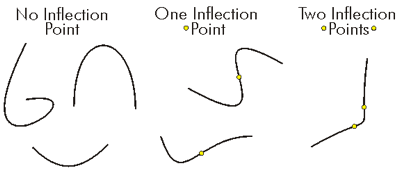
Finally, I settled on a design for the henna stone which i blogged about earlier. The design has some very nerdy geeky aspects to it, a mathematical sculpture with a sort of invisible feature, something that isn’t normally consciously perceived, the inflection line. The point at which a curve inflects must be carefully carved, else it looks weird. So here’s an account of this curious property of curves because it extends the idea from inflection point to inflection lines, which in turn divides the form into distinct regions where the boundary is not normally consciously registered.
Here, in the picture below is the carving where i am just starting to form the wave. It turns out that there is a reference line every 30 degrees, every ridge, valley, and inflection. If those lines are carefully drawn, then it is relatively easy to cut the stone to a close approximation. Then the final stage is done more freehand to get the best final expression, and is much easier if the overall three cycle, tricycle, symmetry is maintained at each stage of carving.
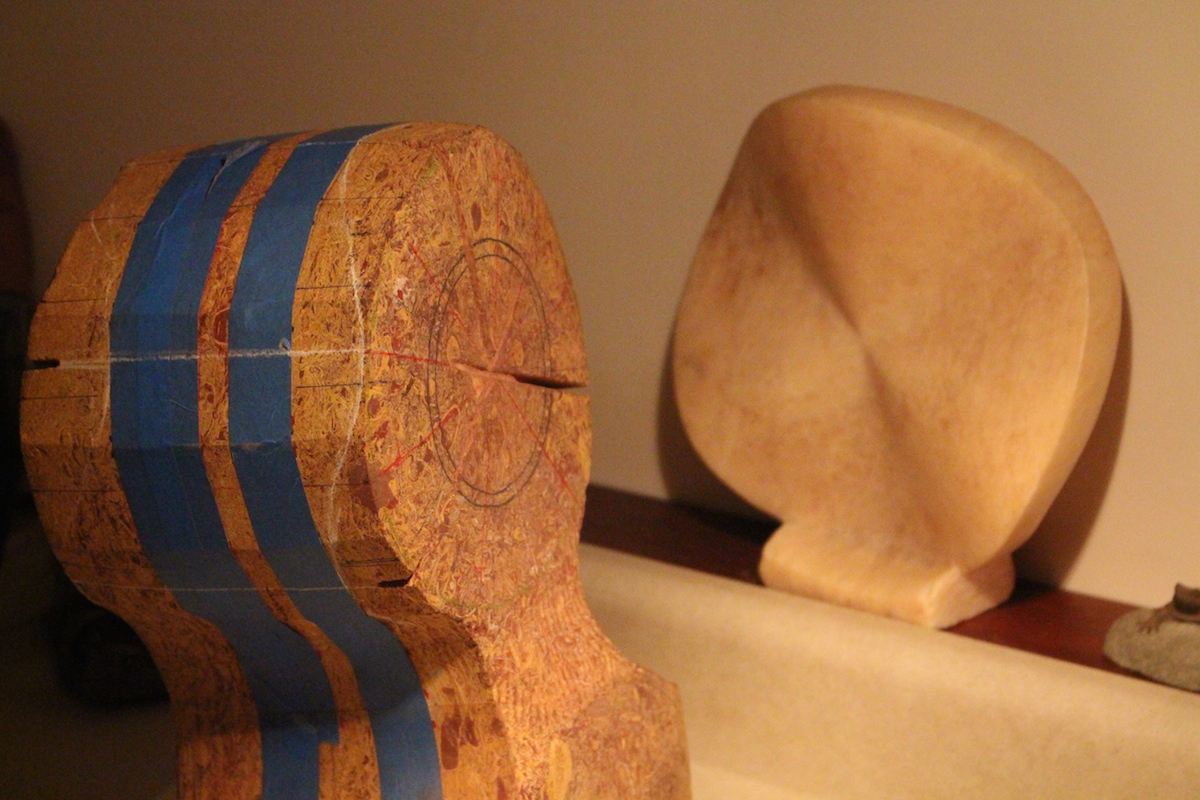
The idea is to imagine a thick plate having a wavy surface, a simple sine wave with three cycles like in the pictures below of a stone sculpture i did long ago based on an idea by Ron Geity.
Continue reading Tricycle design for the Henna stone – and curious properties of the inflection line
Public sculpture in downtown Santa Barbara
Cambria, Moonstone Beach, and the California Sculptors Symposium
Cambria California, pics of the Stone sculpting symposium and local scenic views. The beach there is called Moonstone beach for good reason. See the phenomenal beach sand shown in the pics, you simply must view the sand grains close up for an astonishing view. (See the view full size option button on lower right of picture).
Henna stone carving
Here at Art City Studios I’ve been carving on an 84 pound piece of marble, “Henna” this variety is called. The stone is extremely old and contains many tiny shells and other creatures from perhaps a hundred million years ago. You can see them clearly when the surface is wet as shown in one of the pics. Each picture shows the result of a day or two’s carving from raw to roughed out. The carving is only partly done, roughed out a basic head and shoulders or barbell shape from one side only so far. The final form will be partially rounded, still to be determined.
Visiting Art City Studios in Ventura
Here are a few pics taken while spending some time carving stone at Art City Studios in Ventura California and touring around the local area, including a evening concert at the Green Arts People place. This is just a quick post for now, will add more info later.
Road Trip – Southern Oregon
I think I have an ancient stone tool
In my recently acquired rock collection is this symmetrically shaped and sculpted rock. I thought it was just an eroded form, but a friend suggested it was an artifact, a stone tool. I showed it to another friend who collects ancient artifacts and he suggested it was an abrasion tool. Tonight I was examining it and realized that right where it naturally fit in my hand, the material was much smoother, more polished than other areas where my hand doesn’t grasp it naturally. You can just barely see the band of smoothness where my thumb and index finger naturally fit. And on the bottom you can see an area in the middle where it appears it might have been used to rub something. The markings are quite pronounced once you see it. So, I’m convinced that it was used as a tool to sand and smooth things. I’m guessing the material is limestone, it scratches with a steel blade, igneous stone is harder than steel.
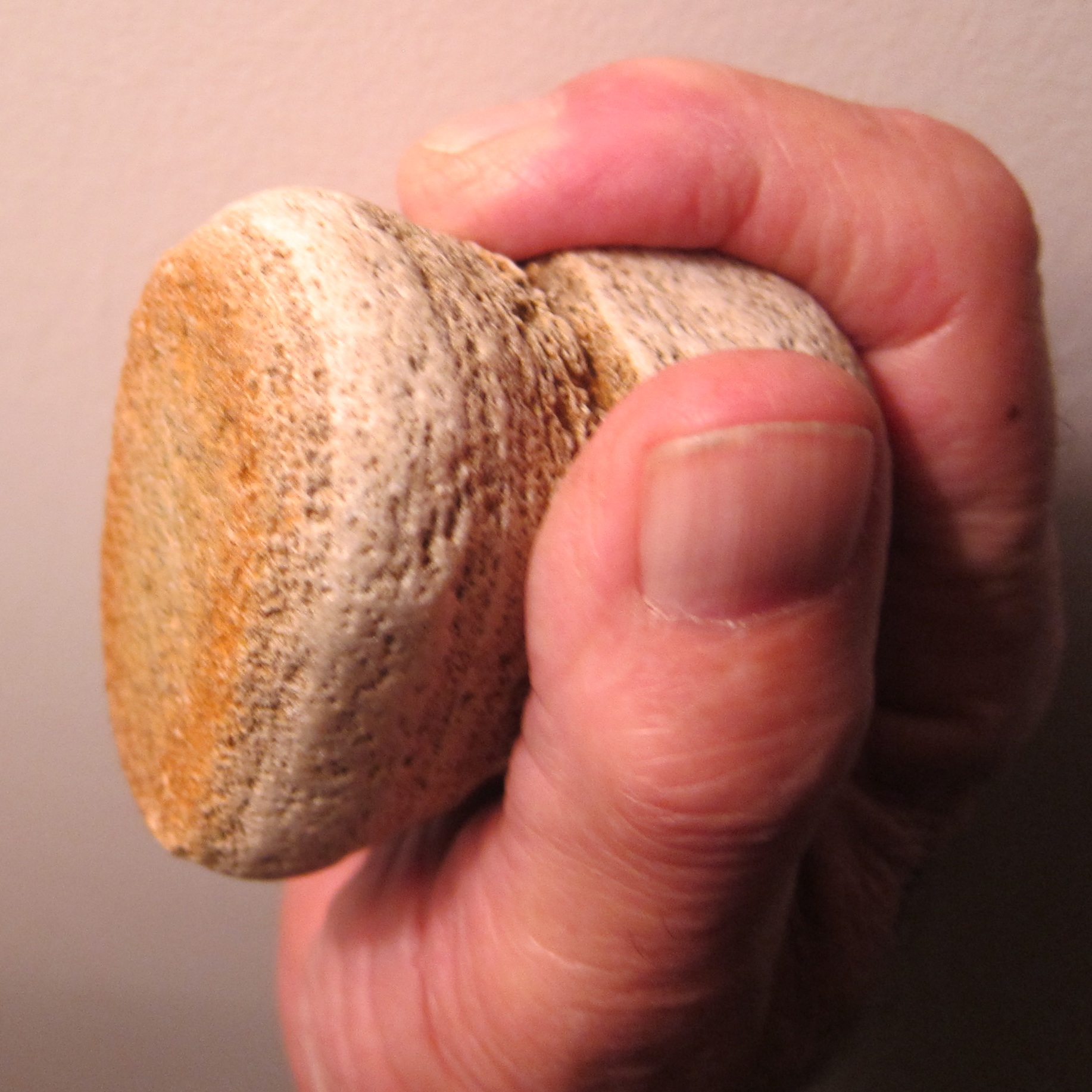
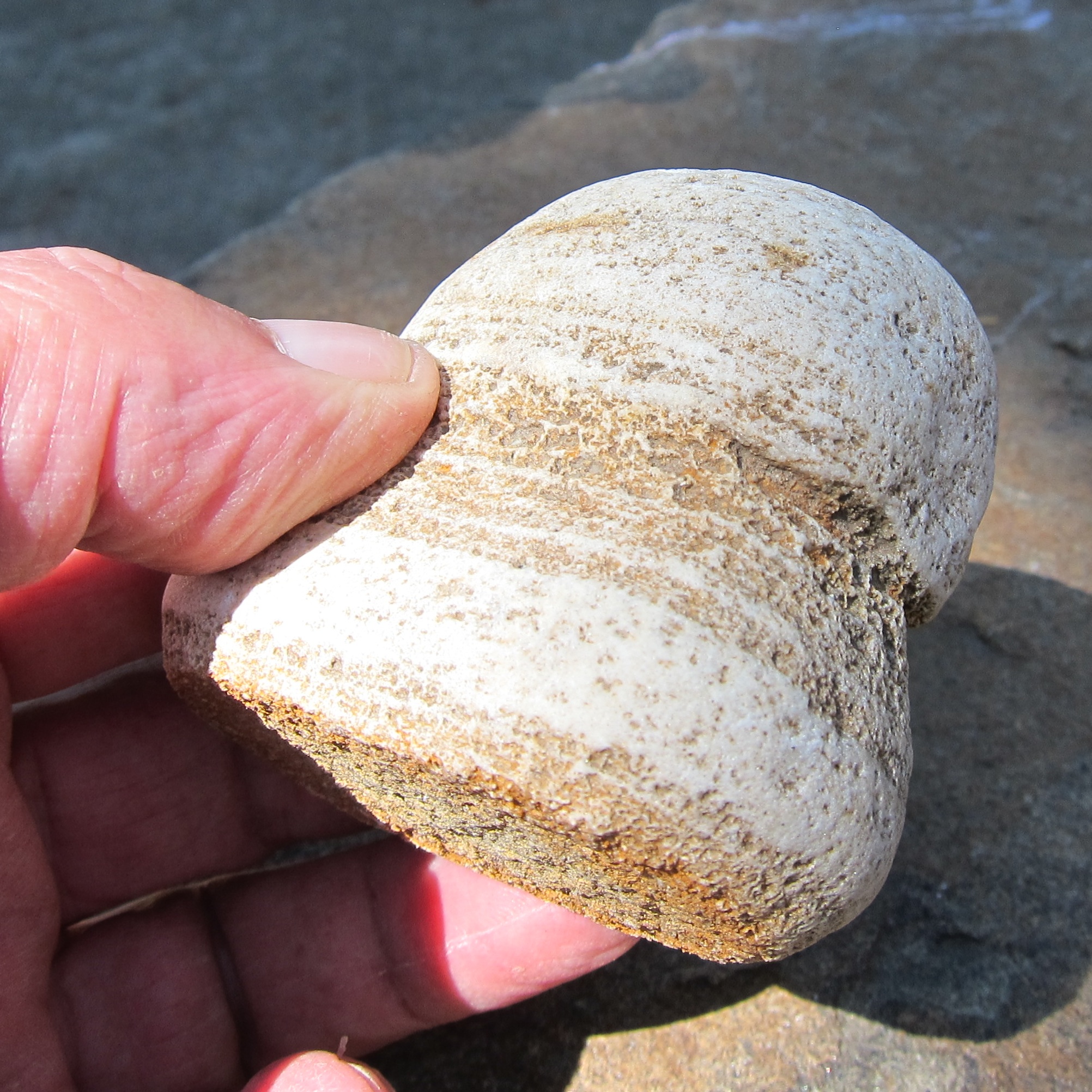
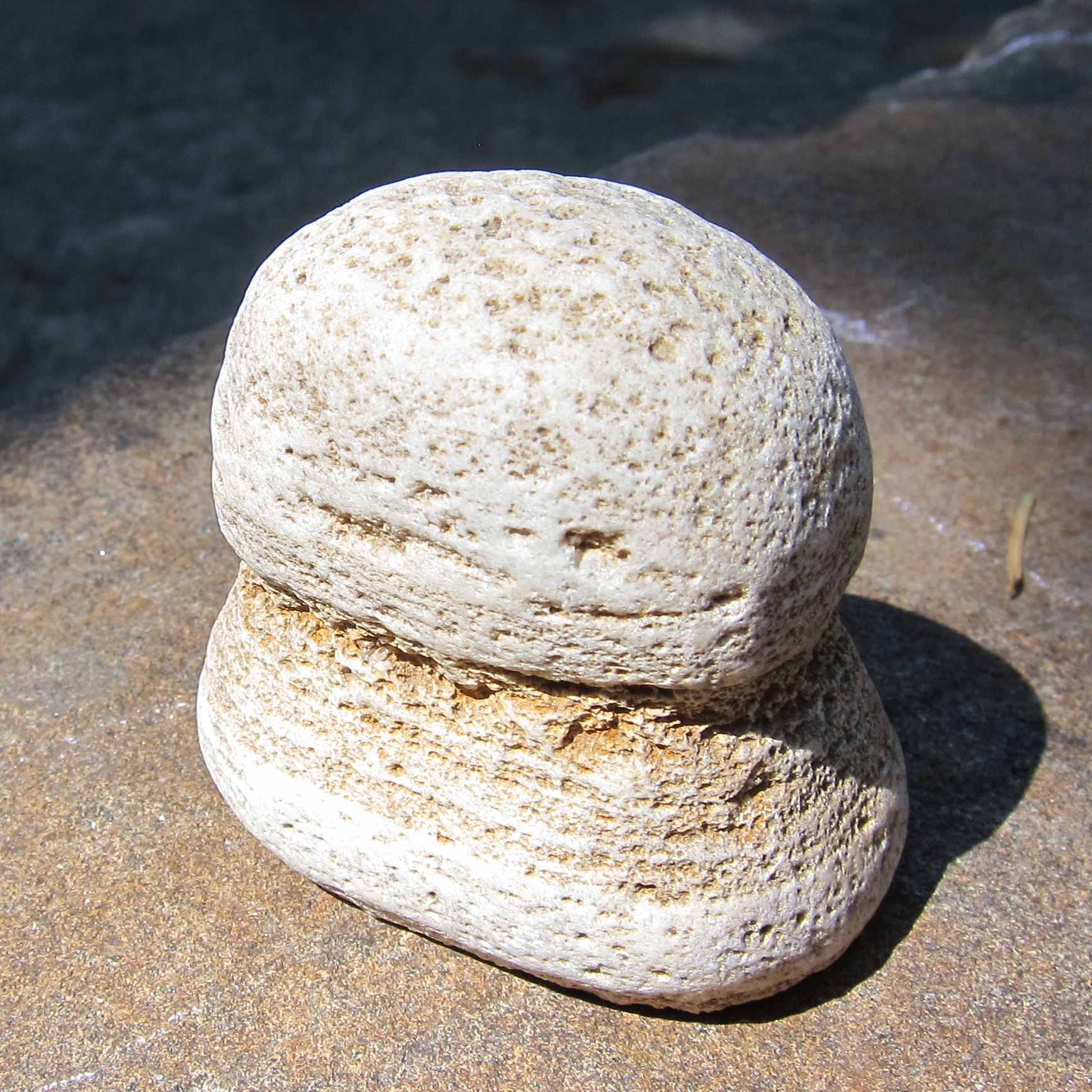
Curious snow white plant
Curious snow white plant growing in my side yard in June, living in a dense shadow of trees, only briefly bathed in bright sunlight, and I assume it is a fungus of some sort. Part of it vaguely resembles a white rose. (Update: a friend suggests it might be Hericium: en.wikipedia.org/wiki/Hericium.
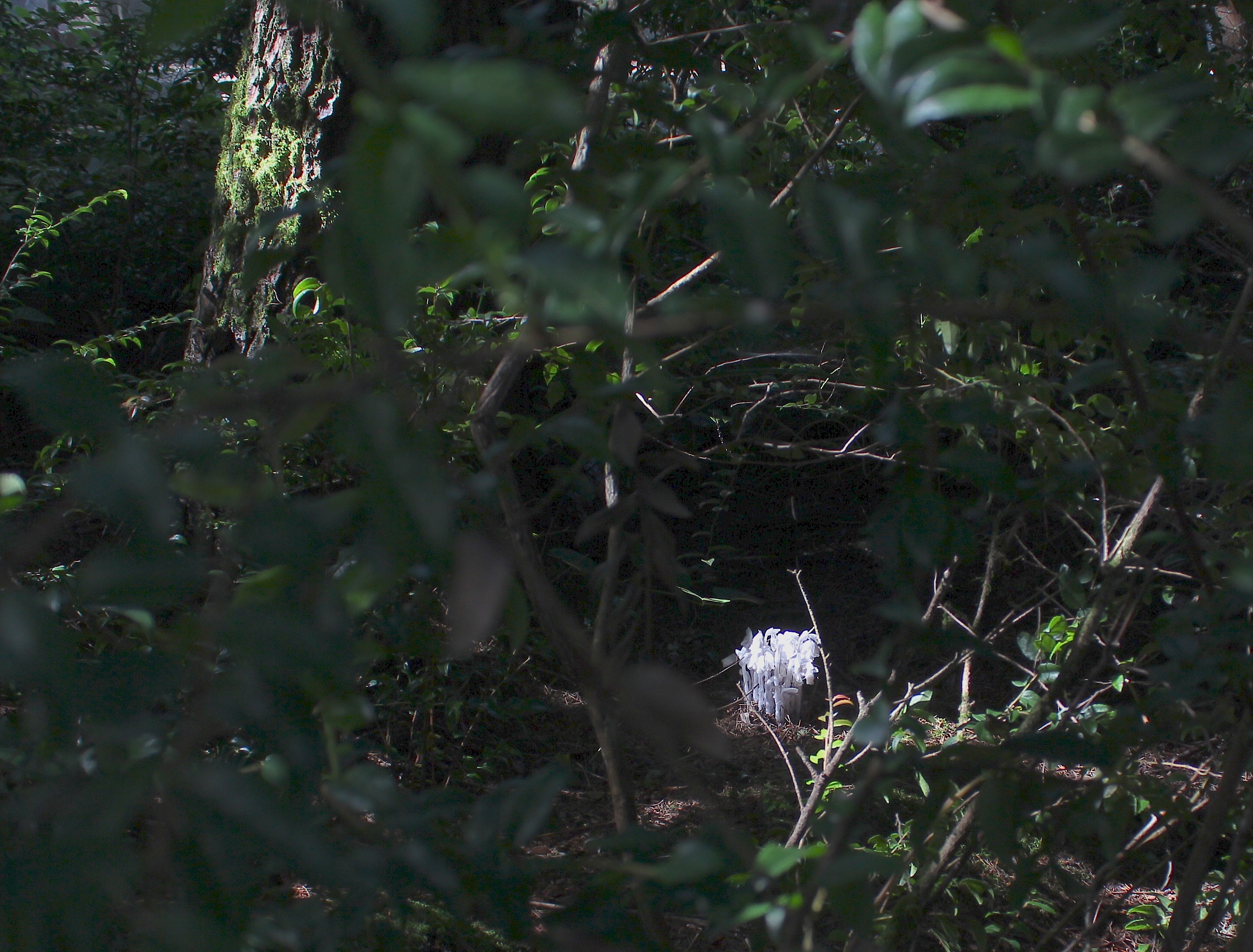

Osprey on Chatcolet Lake
Osprey returning to it’s nest after circling around, scolding me to go away. I did not have the camera set for backlit conditions right, and so had to tweak the image exposure quite a bit.

View from the trestle.


Rocky Point on Lake Chatcolet near Coeur D’Alene Idaho
I’m on vacation and going to a family reunion and staying at my sister’s house at Rocky Point on the lake at Heyburn State Park.
Rocky point is straight ahead across the lake. You can just see the little marina and popular swimming beach in the center of the photo. See below for a close up view.
[Note: photos are large but show up small on the blog, you can drag and drop them to computer for full size.]
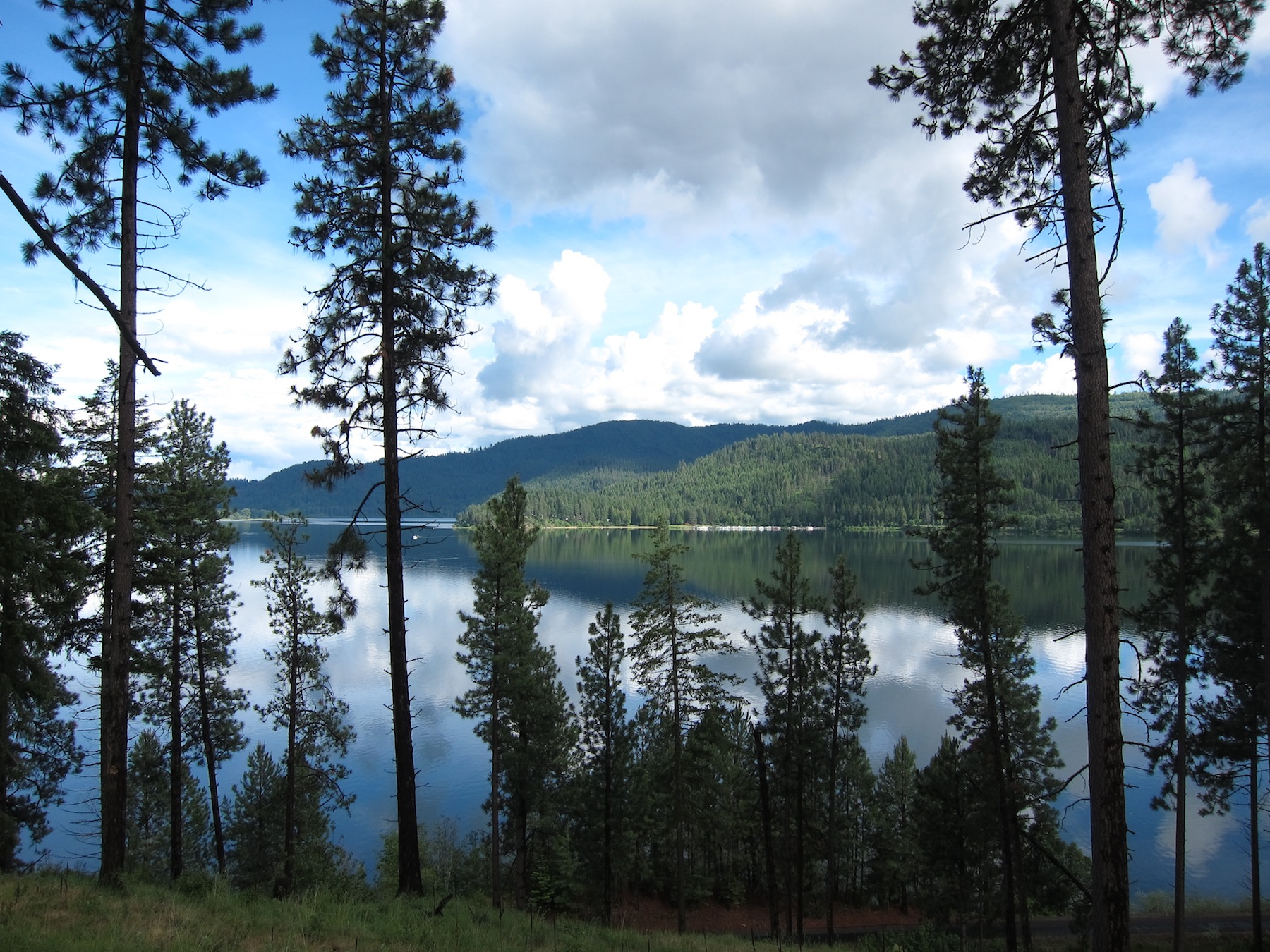
Zooming in on Rocky Point, a few houses can be seen. I’m staying in a house hidden in the trees about where you can see a couple of orange colored trees.

Rocky Point is beyond the marsh area just to the right of center. I was hoping to see the Red Winged Blackbirds, but they stay far into the marsh and avoid people.
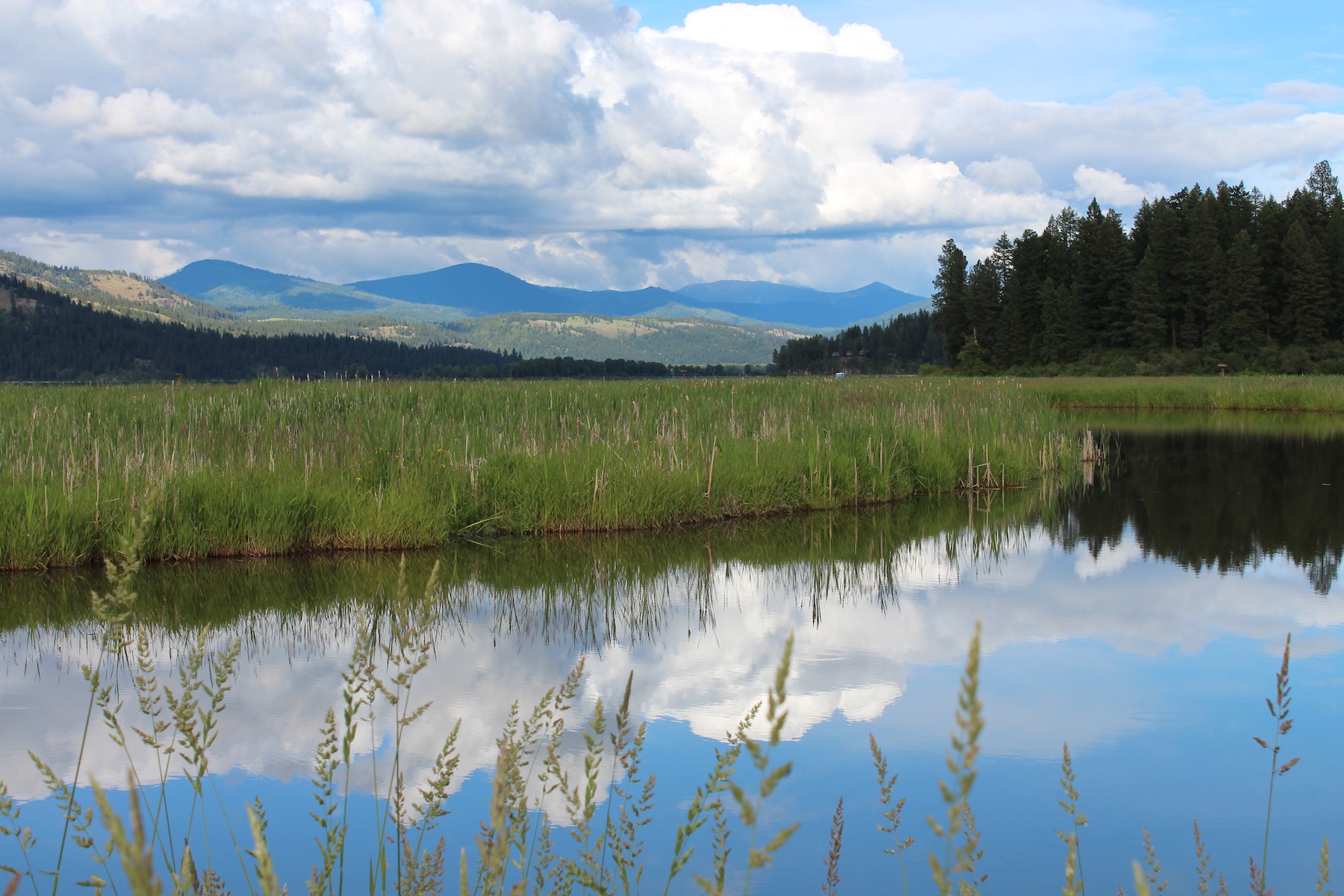
The train trestle bridge in the picture below has Osprey nests nearby which will be the subject of a future photo shoot. Below is a far away shot of an Osprey that lives here.
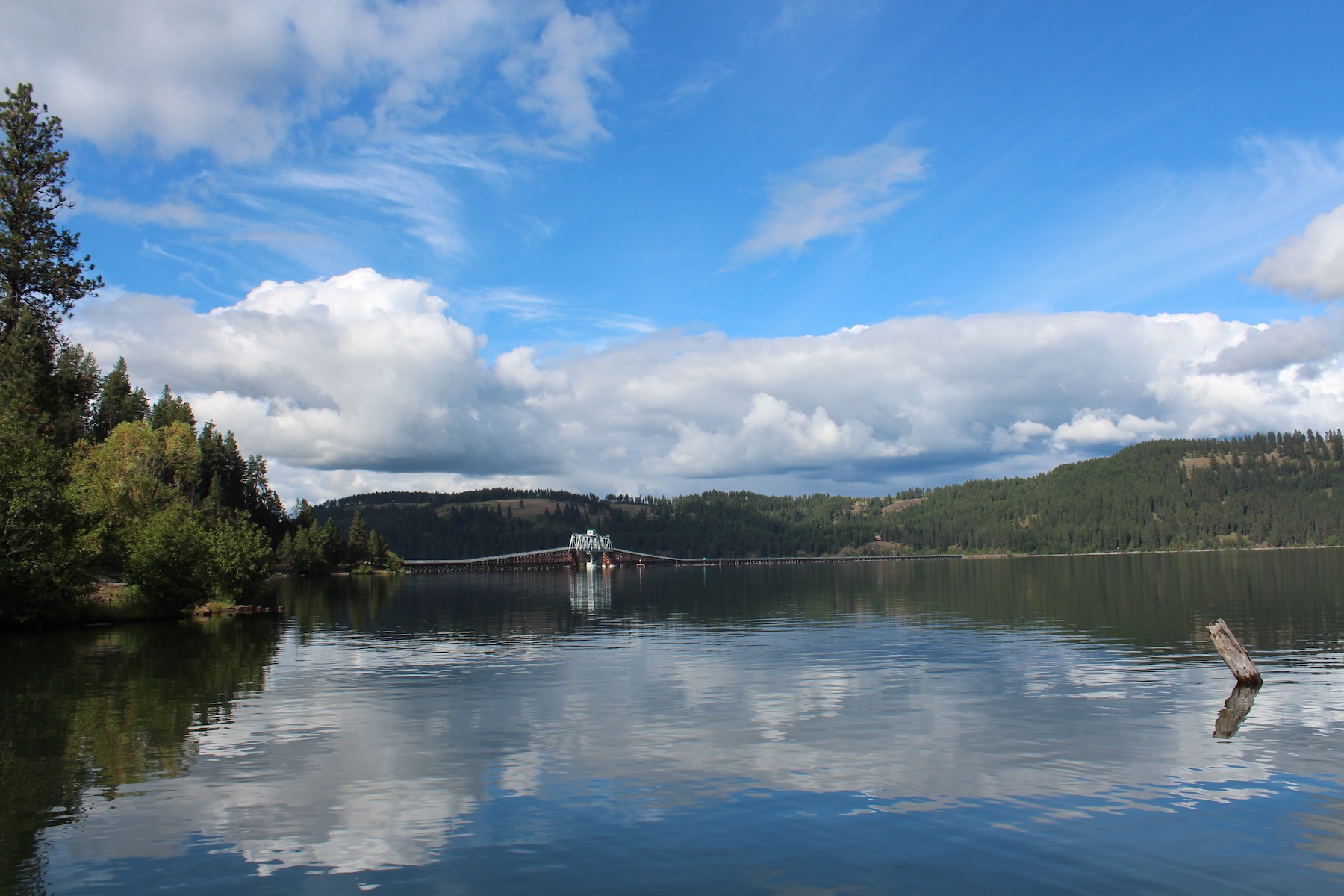
Distant shot of an osprey near the train trestle bridge.
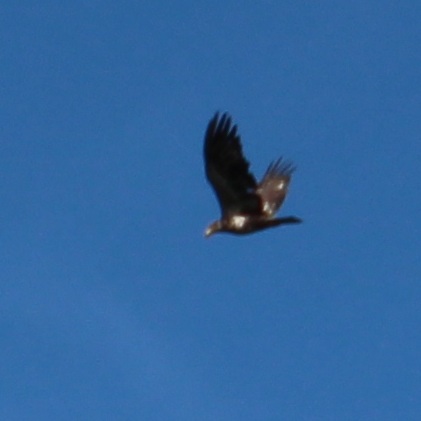
Hiighway 395 in Eastern Washington
Brewing thunderstorm in the evening sky over the rolling plains of eastern Washington on Highway 395.

Columbia River Gorge just west of The Dalles
Today on my way from the Oregon coast going to the Coeur D’Alene Idaho area, here is a view of the Columbia river, taken from the old US 30 Highway, high above the currently used I-84 freeway, just west of The Dalles, OR. That old US 30 is a really winding road, high in the hills, not like the current freeway which is near river level.
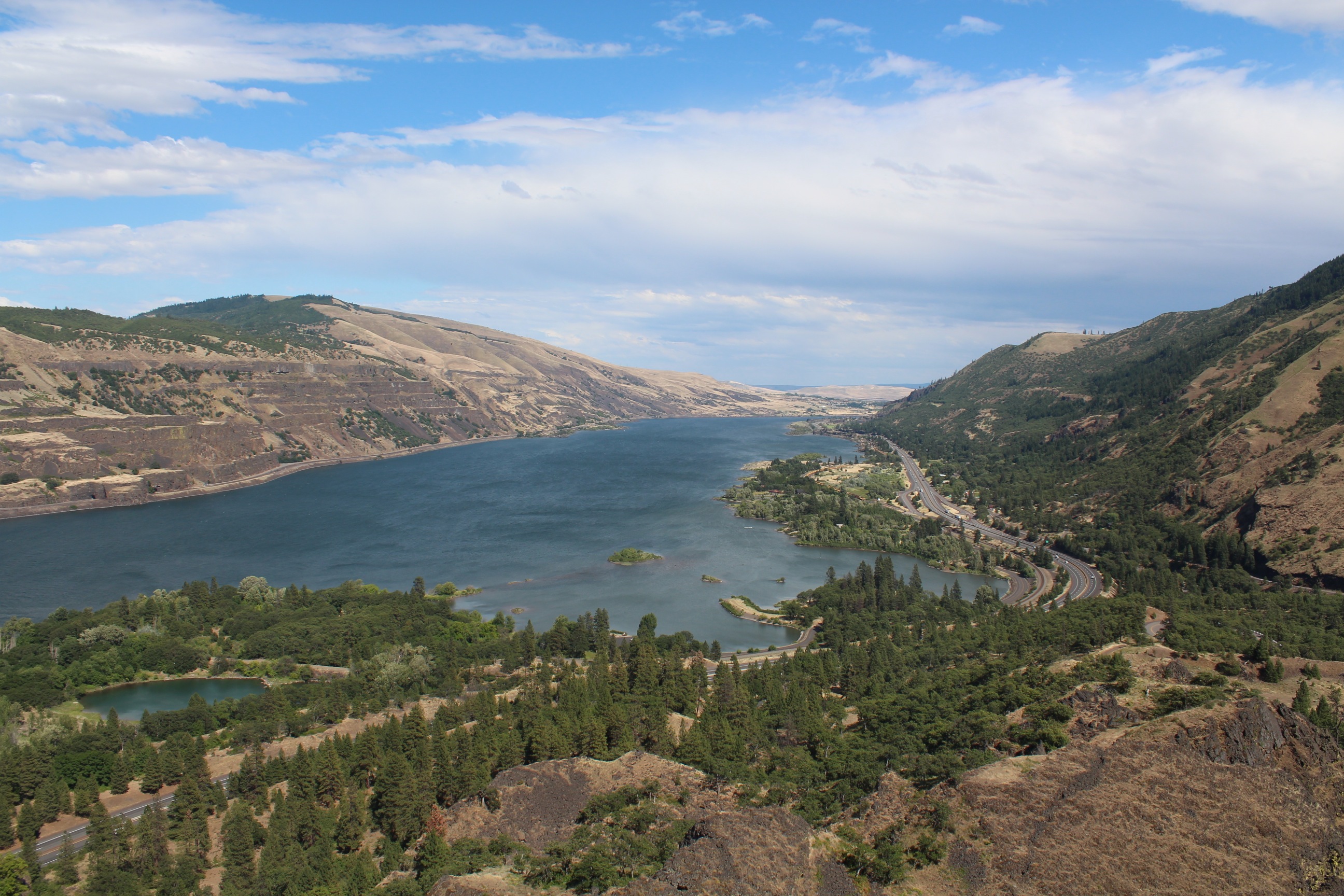
Samples of Argillite perhaps from Pacific Northwest US
Here are samples of two different varieties of Argillite is it said from Alaska. Actually the mineral content and origin of these two samples is unknown, but were obtained from vendors in the puget sound region who also sell stone from Alaska. Argillite is a mud stone created from silt that has undergone transformation. Similar to pipestone in texture. It is a fine grained stone and carves well. These samples show layering and striations due to the accumulation of different colored layers of sediment. Hardness is like a hard limestone so they have metamorphosed and crystalized to some extent.
[Note that you can download the images (drag and drop to your desktop) and you will get a very large image for more detail.]
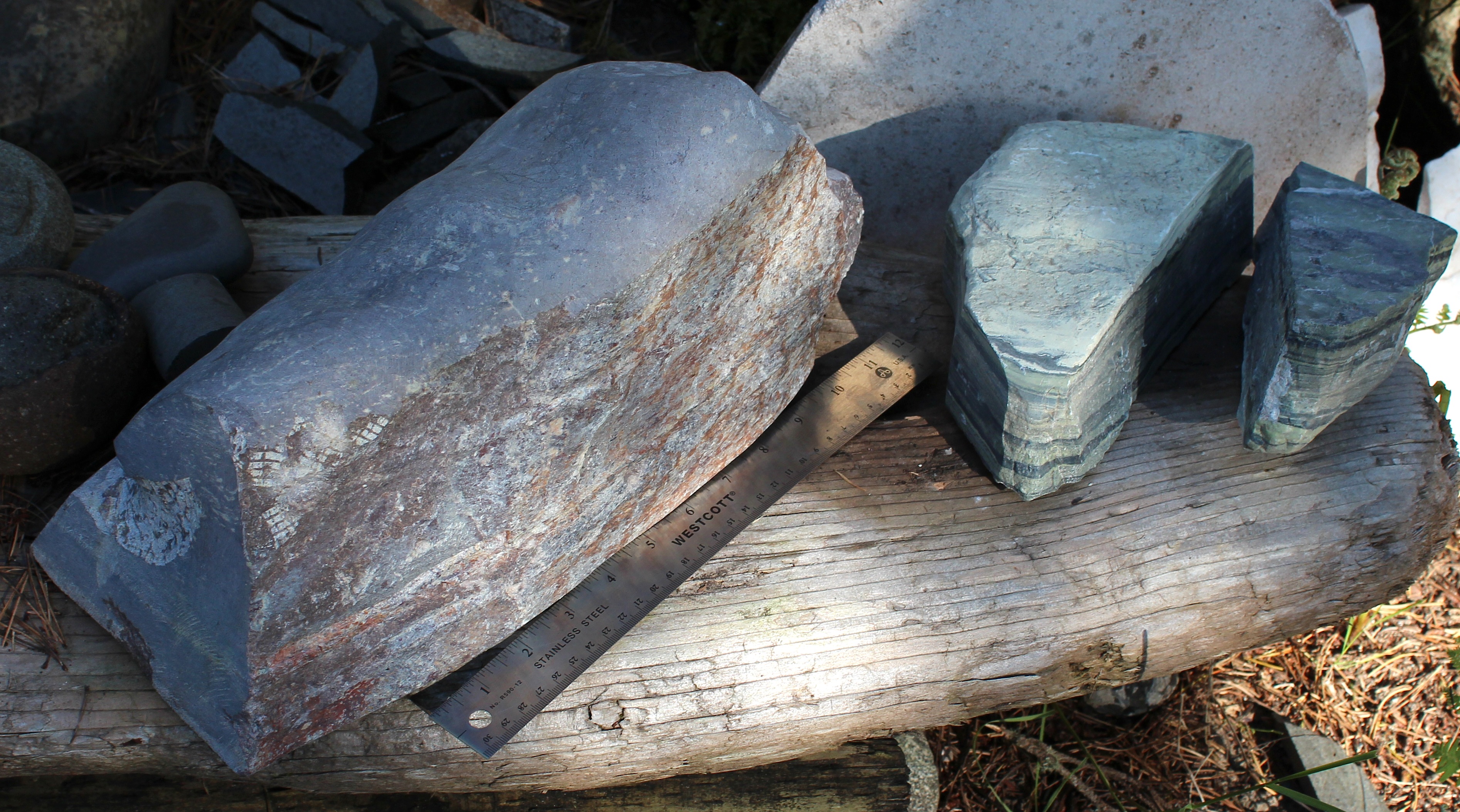

This close up view shows where a core drill had been used to create cores which were sliced into tokens, then holes drilled into the tokens and then tumble polished to form ornamental beads.

Moon shot with Canon Rebel camera
The moon picture below was taken with Canon Rebel t4i/650D with 55-250 mm EFS lens and Vanguard tripod.
Taken at 8 pm April 24, 2013, camera on automatic settings, spot metering, 2 sec timer. Zoomed all the way out to 255 mm, pointed the focus crosshairs and shot, first shot was good, all it took… I tell ya, set on auto and camera’s got more brains than I do.
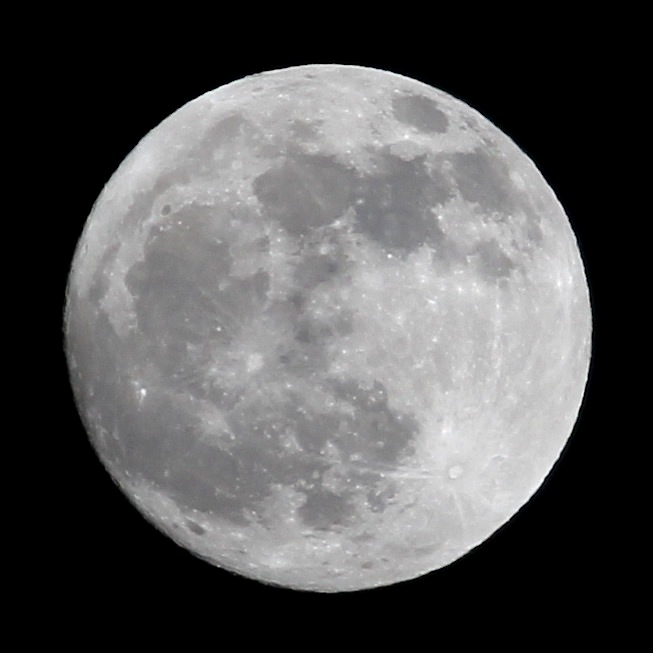
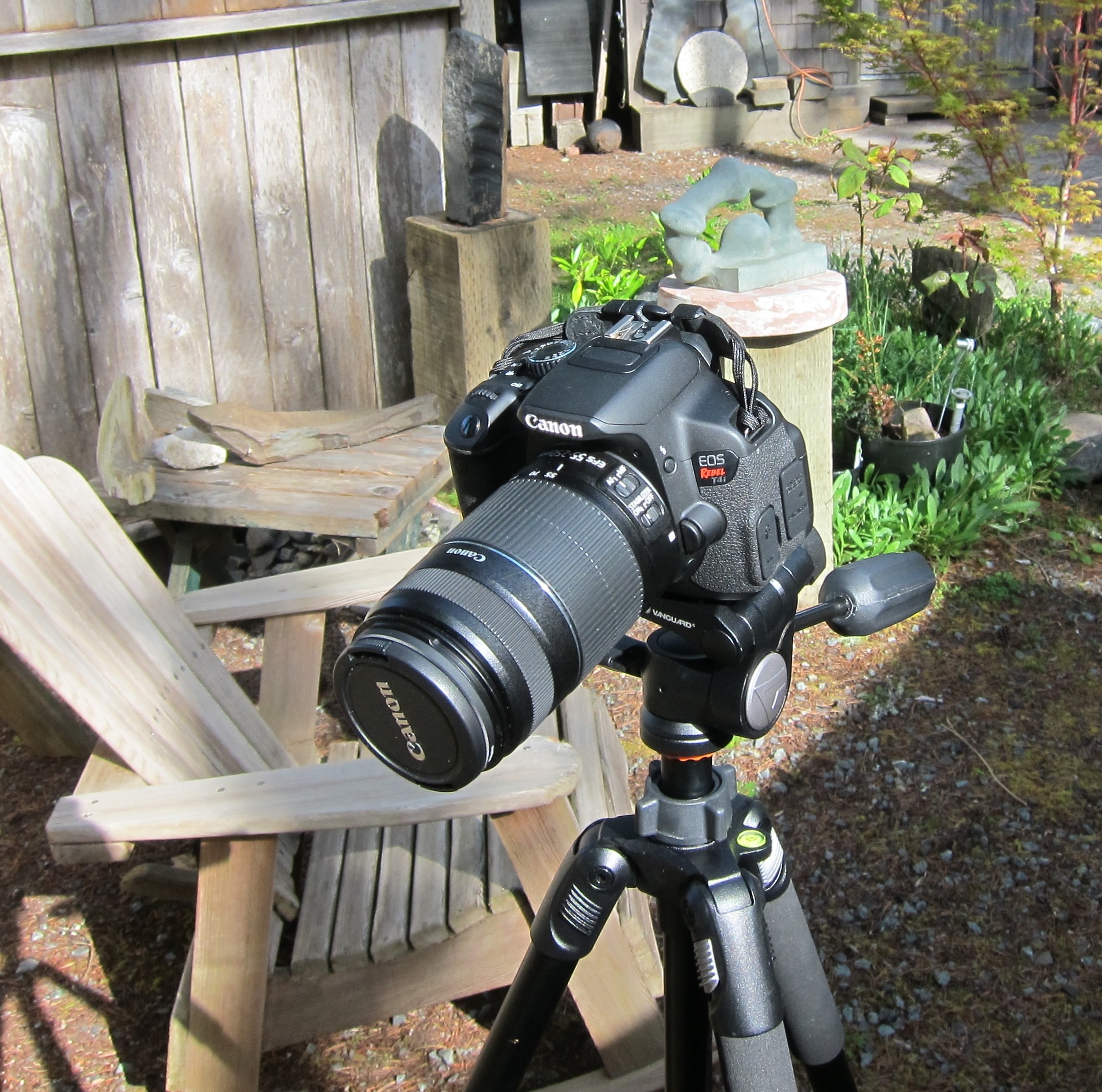
black polar bear figure
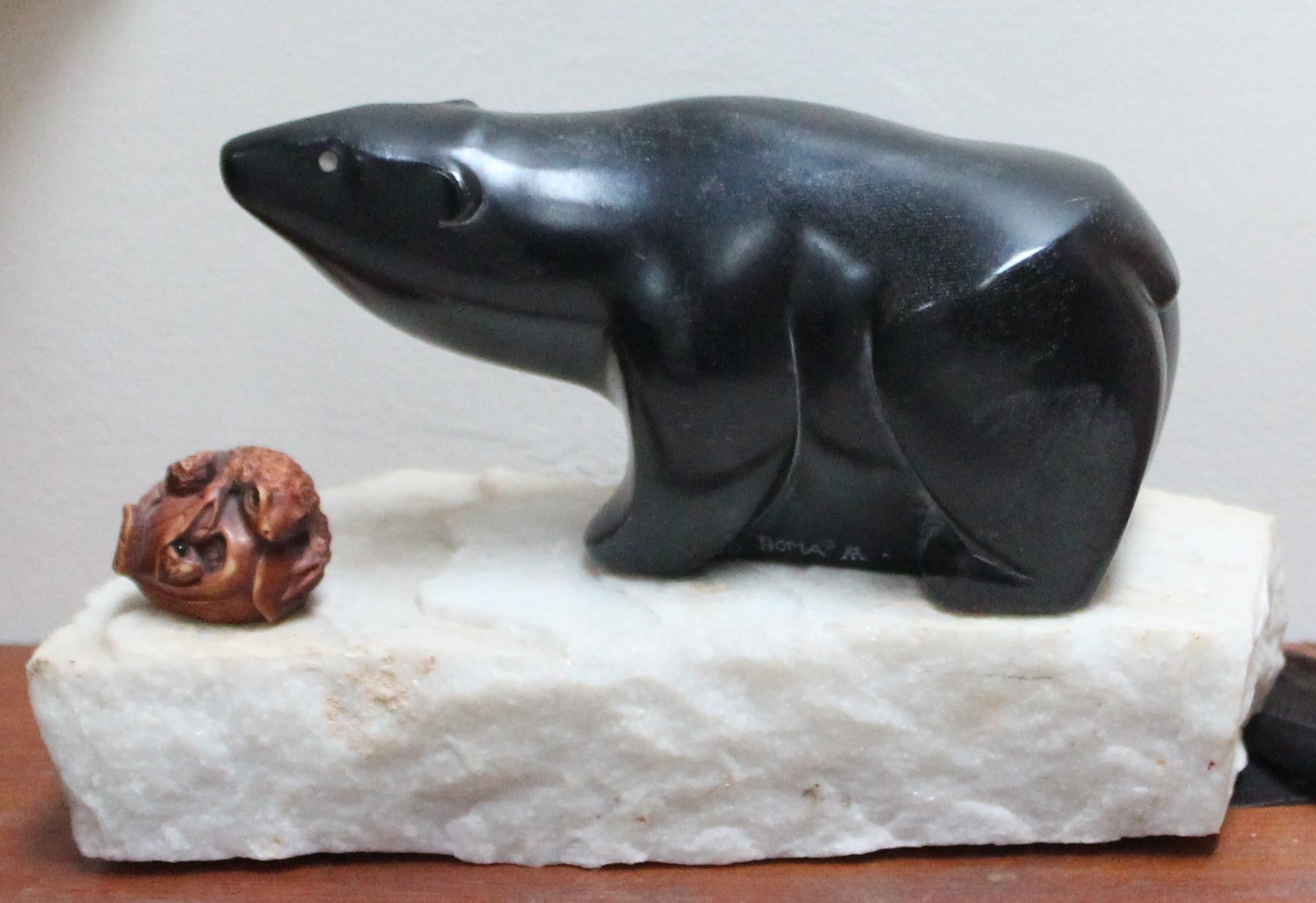
Garibaldi – 3 Graces
Garibaldi wildlife – Colony of Blue Herons
Overlooking the small port village of Garibaldi is a Big letter G on the hillside, and at the edge of the marina where the photo was taken, I personally carved the big G in stone seen here, and that’s where I learned of the herons. In the stand of trees at the bottom of the hill below the G is a colony of these Blue Herons. Herons are huge, a wing span wider than your outstretched arms, legs the size of your arms. I stood a few hundred feet away at the foot of the trees and had my first real experience using a telephoto lens and a good camera. These photos won’t make national geographic, but hopefully they will give you a sense of wonder like they do me.
[there is an option to view the full size at very bottom of image pages]
Seagull Portrait
Garibaldi wildlife – Pelicans
Symmetry applied by Wigner
The concept of symmetry took a great leap when Eugene Wigner showed how mathematical group theory could be used to create the relatively simple structure for what is now called the standard model of physics.
On Wigner’s use of symmetry:
“[Eugene P.] Wigner’s great contribution to science, for which he won the Nobel Prize in Physics in 1963, was his insight into the fundamental mathematics and physics of quantum mechanics. He applied and extended the mathematical theory of groups to the quantum world of the atom; specifically, he used group theory to organize the quantum energy levels of electrons in atoms in a way that is now standard. With that mathematical approach to the atom, Wigner became one of the first to apprehend the deep implications of symmetry, which has since emerged as one, if not the, key principle of 20th-century theoretical physics. …” Eugene Wigner and Fundamental Symmetry Principles
Here is Wigner’s original paper on applying the mathematical notion of a symmetry group to transformations on vectors in abstract Hilbert space.
Wigner : Symmetry principles in old and new physics
Some other reading on Wigner and the application of symmetry to physics:
Wigner’s theorem – Wikipedia, the free encyclopedia
Symmetry in Physics: Wigner’s Legacy
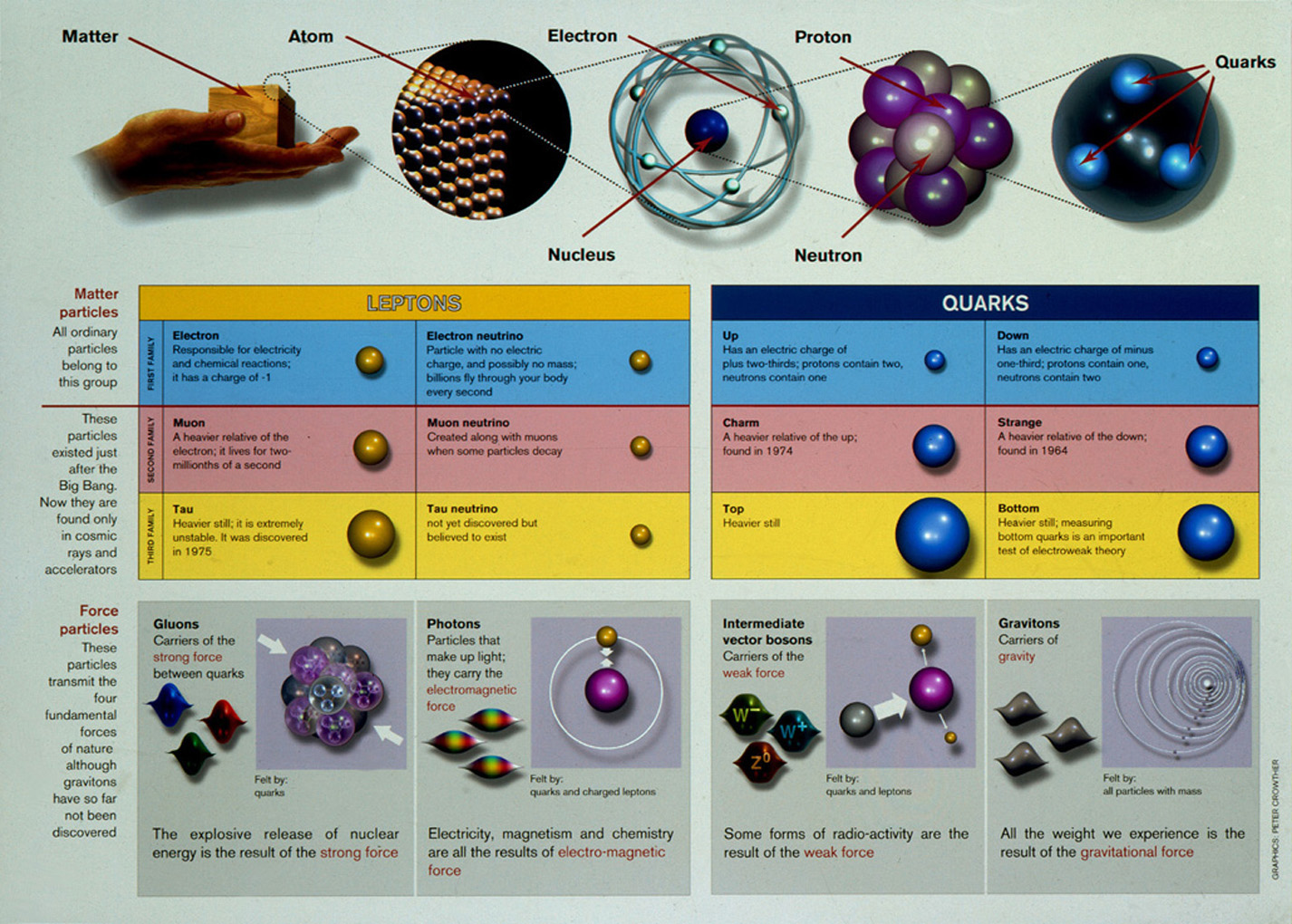
Genesis – evolving structure of the universe
Some background for my science notes:
About eight years ago I wrote a note outlining the basic steps of the evolution of the universe, cosmogenesis it has been called. My main interest is understanding why the ongoing production of variety over the 13 some billion years going from energy to particles to material to life, and whatever other forms of variety that we can know.
symmetry -> variety
I have surveyed several academic disciplines trying to sort out a grand, metaphysical but scientific view that makes sense across a range of perspectives from physics to biology to computers to psychology and spirituality. This is a summary of my understanding at that time, and it’s still consistent with what I know now.
Continue reading Genesis – evolving structure of the universe
Symmetry according to Feynman
from Feynman’s “Six not so easy pieces”, p. 24
Each of the basic species of physical particles and forces are exactly the same, no discernible differences between one electron and another, one photon and another.
Playing catch with a ball in a moving vehicle behaves the same as playing catch standing still, unless the vehicle accelerates. Momentum always acts the same while moving or standing still.
physical laws work the same going forward or backward in time.
Physical law symmetries:
-Interchange of identical atoms or identical particles
-Uniform velocity in a straight line (Lorentz transformations)
-Reversal of time
-Quantum-mechanical phase (of the wave function involving amplitude and probability)
-Matter-antimatter (charge conjugation)
Space/time geometric symmetries:
-Translation in space (move to new location)
-Translation in time (happen at a different time)
-Rotation through a fixed angle (turn to a different direction)
-Reflection of space (mirror image)
Not symmetric – change of scale (ratio of wavelength to length fails)
For each of the rules of symmetry there is a corresponding conservation law.
by adding classical mechanics and principles of quantum mechanics you get:
-translation in space <=> momentum is conserved (similarly, rotation – angular momentum)
-translation in time <=> energy is conserved
-quantum mechanical phase <=> electrical charge is conserved
Symmetry according to Weyl
“As far as I see, all a priori statements in physics have their origin in symmetry.”
geometric concept of symmetry:
translation (change position in space), Rotation (rotate around a point), Reflection (inverted)
ornamental (tiling of plane, packing)
crystallographic
general idea: symmetry = invariance of a configuration of elements under a group of automorphic transformations
[automorphic = element-wise transformations which leave all structural relations undisturbed]
“decorate surfaces with flat ornaments”
“arrangements of atoms in a crystal are [solid ornaments]”
“perhaps one should … substitute…” average distribution density for the atom’s exact position when in equilibrium
“The image of an object traced by light of a certain wave length will be fairly accurate only with respect to details of considerably greater dimensions than that wave length, whereas details of smaller dimensions are leveled down.”
wave length of ordinary light is about a thousand time as big as the atomic distances
“If conditions which uniquely determine their effect possess certain symmetries, then the effect will exhibit the same symmetry.” pg. 125. e.g. the pattern of a stretched sheet will reflect the pattern of the applied stress. the shape symmetries follow the action symmetries.
“morphological laws of crystals are today understood in terms of atomic dynamics”
if there is a state of equilibrium then atoms arrange themselves into a regular system of points.
“The visible characteristics of physical objects usually are the results of constitution and environment.”
duality
genotype/phenotype
nature/nurture
discrete/continuous
space has high symmetry because of indiscernible points and directions.
Leibniz: similarity is individual indiscernibility
Helmholtz: congruence is the only objective relation in space
“What we learn from our whole discussion … is this lesson: Whenever you have to do with a structure-endowed entity, sigma, try to determine its group of automorphisms, the group of those element-wise transformations which leave all structural relations undisturbed.”
element
entity with structural relations among elements
Pattern Language in Art

The idea of a pattern language can be used to describe certain regularities in artistic design. As the term has come to be used, a pattern language is about ways to achieve a good design, based on a history of design elements that serve people well, or based on any other way of sorting out effective and valued solutions that have been or need to be invented.
Continue reading Pattern Language in Art
Pages from a sketchbook…
From my stone sculpting sketch book a decade ago.
Bird profile study and a copy of a design by a friend who gave it to me to carve a stone sculpture.

the card trick illustrates being mislead by rigid expectations
In this video the man asks the viewer to pick a card from the deck shown on the screen and remember it. Then the man spreads the cards for you and tells you to look for the card you picked.
Most people cannot find the card they picked. Well there is a little trick and once you know the trick it is easy to spot your card. What’s going on?
Watch the video first:
https://www.youtube.com/watch?feature=player_embedded&v=CGEKnHdKJVc#!
Most people viewing the card video will pick a card such as say the 10 of diamonds, and for this card we visualize the printing in red because diamonds and hearts are conventionally red. Notice that the man deliberately sets the viewer up by saying “pick a card, it may be black or red” and shows a black ace.
When you look for the red 10 of diamonds from our example it isn’t there because the colors have been reversed. The 10 of diamonds is black. And most of us will not notice the color reversal and will have a hard time spotting a black 10 of diamonds.
However, the instructions were to pick a card from the deck. And for picking a particular card from a standard card deck the color of the card is an incidental feature. A card is picked from a deck of cards by specifying a suit and a number (or name) – such as the 5 of spades. (4 suits x 13 numbers = 52 cards).
Apparently we prioritize color over number since just about everyone is tricked by this video. We expect to find the card by first looking at the right color, then by checking if the number is right.
But that search strategy fails when the colors are reversed as they are in the card deck in the video. We can easily find our picked card if we look for the number and suit and ignore the color.
Moral of the story – Our fixed expectations can easily lead us astray. If we expect a certain pattern then we will miss things when that pattern varies in a non-essential way. And since patterns often vary in inessential ways in daily life, we can easily jump to the wrong conclusions.
slow going design
A follow up on the large piece of calcite stone I brought back from Art City Studios.
Hooo boy, this piece of calcite is a challenge to sculpt mainly because it has so many lines in the appearance. I’m going through a pretty mechanical process of creating a design, I don’t yet have a gut feeling for any particular concept. Here’s four pics. First is a pic of the stone temporarily installed with back lighting, then some drawings where I’m trying to visualize a couple ideas in 3 dimensions, as a shape of a volume. Upon study it becomes very apparent that the linear lines of the fractures, the thick rind, and the subtle coloration in the center of the stone all orient the same way, so the visual design has to take that into account.
The piece of stone temporarily installed for study under back lighting conditions
Couple of sketches trying to visualize the 3D volume
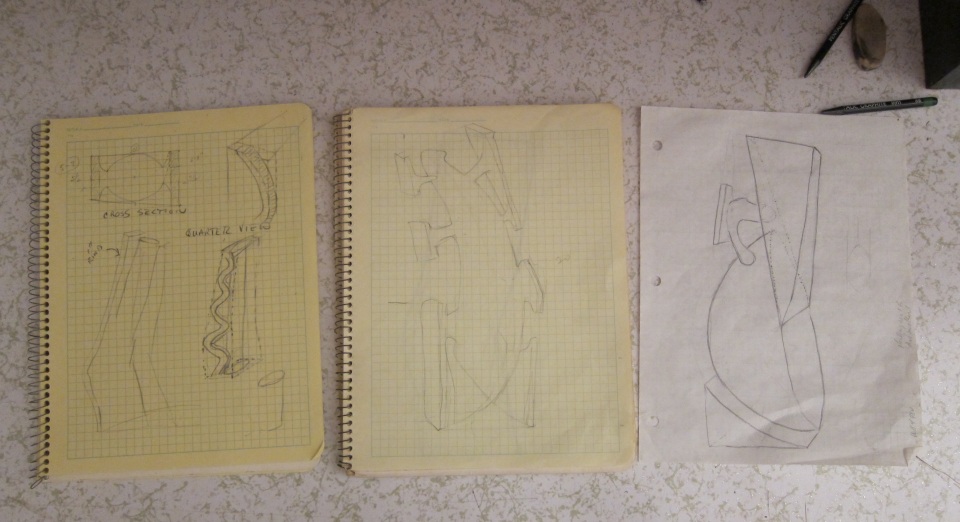
The piece of stone as bought and transported home last summer
Beach time
Basalt starfish carving – technical note on center detail
Just a quick note on progress carving a starfish figure into a piece of columnar basalt. This is mostly a study piece where I’m experimenting with basalt carving methods.
The specimen starfish has ridge lines that form a pentagon where they meet in the central body of the starfish. Here I am trying to remove material in the center of the stone figure so that the interior volume, a little bowl, is pentagon shaped to match the ridge lines. The little bowl form is about the size of your thumbnail.
The stone is very hard and brittle like glass. Tools with diamond abrasive grit is the main way to remove material in a controlled way.
What is interesting here is that I had to hold the grinding wheel at an unusual angle to match the concave sides of the inner pentagon. The grinding wheel is almost the same radius as the curved pentagon side, so holding in just the right way allowed the wheel to almost exactly match the curve better than if I were to use a drawing or sawing stoke following along the curve. And at this small scale I don’t have the dexterity to do careful curve following.
However, as the last image shows, once the basic contour is formed, then it becomes easier to more precisely smooth the form with very tiny brush like grinding strokes that barely touch the surface, using ball and wheel shaped grinder bits with finer grits, and alternating with hand rifflers to remove tool marks.
Cook creek on a sunny fall day
Mirror mirror on the wall…
I posted the following question on facebook. When someone finally asked for an answer, I had to figure out how to say it. Let me tell you, it is tricky. The explanation involves some assumptions that we are not usually aware of. Some people say the answer has to do with the bi-lateral symmetry of a human. But that’s not exactly right because the phenomena would be true of just half of a person which doesn’t have the symmetry. Anyway here’s my answer to the question:
Why does a mirror image reverse left and right, but not top and bottom?
Short answer
A mirror image reverses the front to back direction, or orientation, of an object that is facing the mirror. The left and right sides of an object are defined relative to the front/ back and top/bottom directions of the object. The definition of the top and bottom of an object doesn’t depend on the front to back direction. Since the mirror image reverses only the front to back orientation of an object, left and right are reversed, but not top and bottom.
Explanation:
1. A mirror image reverses everything front to back, so that everything about the object that is pointing or oriented forward will be oriented the other direction, backward, in the mirror image. Looking at a foot in a mirror you would see that the toes of the foot and the toes of the mirror image are closer together than the heels which are further apart.
2. Top and bottom don’t depend on the orientation of the object. Two cases: The orientation of head and feet is fixed and defined with respect to the body, and doesn’t depend on direction of the body. Or, if you think of top and bottom as which ever is higher and lower, then again the mirror image only reverses front to back, so higher and lower are not affected by a mirror image.
3. The meaning of left and right requires that an object have a front and a top, in other words all three dimensions of space are required. The mirror image reverses the front/back dimension, so because left and right are relative to front and back, they are reversed along with it.
A good example that may help you visualize this is to consider a clock that is built exactly as a mirror image of another clock. Everything about the two clocks would be identical except for two things – The mirror image one would run backwards and it’s left and right would be reversed. But the top and bottoms, and the front and backs of the two clocks would be identical.
Stone chiseling styles
There are a variety of ways to chisel. Here are some comments on shaping and smoothing stone with chisels after preliminary roughing out. This is where you begin to form contours, 3d curves that conform closer and closer to a target contour.
You control how you remove material along a path by how hard and fast you tap or strike, and by the angle of the chisel and how hard you hold the chisel against the stone.
So for example, to shear a layer of stone off along a path, you hold the chisel at a low angle and at the same time hold the point or edge tight against the stone. When you tap once the chisel point will advance a short distance, a few mm’s and take with it a layer of stone. The depth depends on the factors – angle, tightness, and how hard you tap or strike the chisel.
If you don’t hold the edge or point down tight enough at such a low angle, the chisel will not dig in, but will skid across the top of the stone.
You can raise the angle of the chisel to take more off but it will dig in too far and chip out whole chunks that leave pits that are too deep. You compensate by lowering the angle and holding the point down harder, until you can create a smooth path at the right depth continuously as you tap, tap, tap, at the rate of 2 or 3 times a second or slower, whatever works. Basically it’s much like shoveling a path thru the stone by guiding the chisel’s depth and direction and energy as you go. You use a rounded tip chisel in concave or hollow areas so the chisel tip corner matches the concave shape.
You have to adjust the angle as you move around the contour, so what you are really doing is keeping the chisels angle constant relative to the direction of the contour at the point you are working. Remember tangent and normal lines in geometry, well this is what your brain will learn to gauge the tangent as you practice following contours while holding the chisel at the changing relative angle as you move around the contour.
This tap tap tap method is useful for shaping and smoothing after you have roughed out the general contour using a more aggressive chiseling style, which in turn has some other factors to consider such as the stones fracture structure.
There are other styles of chiseling. Pitching large chunks off, and “bushing” using a special multi-pointed chisel that pulverizes the surface, and so on.
Walk about at Art City Studios
Art City gallery on stonemuse.com

Art City Studios, occupies an acre or so on the industrial edge of downtown Ventura CA where you will find a collection of make-shift artist studios and a huge supply of sculpting stone and various artists coming and going. I visited for a couple of weeks and took these pictures walking around.
Calcite piece from Art City Studios trip
Calcite turns translucent when the surface is smooth or wet. I bought this 220 pound, 3 foot tall piece while visiting Art City Studios and am now planning how to carve it so the light plays well on the natural stone structure. From a design perspective, the natural structure of the stone has strong layering and other prominent lines from the crust and from deep fractures across the stone. As it turns out layered stone shows strong patterns when you cut across the lines, for example it creates a bull’s eye looking straight on to a mound shape, so noses, boobs, bellies, and knees look like bull’s eyes. Such is the joy of carving highly patterned stone. Also the piece is sawn perfectly flat and smooth on one side and is rough and bumpy and bulging on the other side. So a whole variety of symmetries and asymmetries to distract from starting.
The overall structure is sound because tapping the stone with your knuckles you can hear it ring.
At the moment I have only the beginning of a design where I want to break up the lines in the crust so it doesn’t just look like a broken piece of fossilized wood and secondly I want to feature several little 3D shapes connected in some way, and third I’d like an overall curved smooth feature. Or maybe something different and better.
Best viewed in full very large size [option shown at the bottom right of the gallery picture]





























































































































